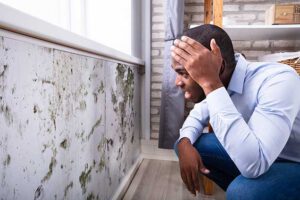If you have found mold in your home, the process of removing it may vary greatly. You may be able to remove it yourself using a mixture of vinegar and bleach or spray a mold removal solution on the affected areas. However, if the area is difficult to access, you may need to contact a professional.
Costs of mold removal vary by state, area, and level of infestation. Most professionals charge by square foot, but some work on an hourly basis. In addition, mold remediation is typically an expensive process, so you should consider contacting your insurance provider for coverage. The cost of mold removal may be as low as $500 to as high as $21,000, depending on the level of infestation and the type of mold.
Estimates vary, but a small home will probably cost around $1,500 to $3,150 for complete mold remediation. The price can increase significantly if toxic mold is present or has spread throughout the house. Additionally, if the mold spreads through walls, additional remediation equipment may be required.
Mold cleanup can require protective clothing and new materials. During the cleanup, you may need to use dehumidifiers and fans to remove moisture from the air. You may also need to add flexible ducts to the HVAC system. Testing procedures are also needed to ensure that mold removal has been effective.
Green mold refers to several groups of fungi that have a furry appearance. They grow in damp places such as the bathroom, kitchen, or basement. Exposure to green mold can lead to respiratory problems and asthma. The cost of green mold remediation can range from $1,500 to $5,000.
The costs of mold removal vary greatly from state to state and company to company. However, it is important to seek a professional as soon as you discover an infestation. Putting off mold remediation will only make the problem worse and cost you more money. Before you contact a mold removal service provider, check out customer reviews and ratings.
There are several methods of removing mold. Some of them involve using harsh chemicals, while others are less aggressive. In either case, you need to be careful not to spread mold spores all over the house. Using protective gear is also recommended to prevent skin irritation and inhalation. Use the right techniques for the mold you have.
The most common areas that suffer from mold growth are attics and crawl spaces. These spaces are hard to access and often have uneven surfaces. Traditional methods of mold removal are ineffective in these spaces and can cause more damage. In addition to the time and effort they take, these methods often produce hazardous secondary waste.
One chemical-free method for removing mold is dry ice blasting. Dry ice blasting does not use harsh chemicals and is a safer option for both people and the environment. In addition, dry ice does not create secondary waste. The substance itself sublimates once it contacts mold.
To prevent mold growth in the first place, it is essential to limit the moisture in the air. Avoid standing water in bathrooms and drains, if necessary. If a leak is the source of the problem, you should stop the leak before attempting any mold removal. Another way to prevent mold growth is to regularly air the room. This will remove the stale air in the room and prevent mold spores from forming.
Aside from the odor and damage caused by mold, it is also harmful to the health of people living in the house. The presence of mold spores is especially dangerous for people with respiratory conditions. Some people may be more sensitive to mold than others, so you should be careful. As a rule of thumb, mold growth can last for as long as 48 hours.
There are several different methods of removing mold, but they all have the same goal: removing it as quickly and easily as possible. The most common way to remove mold is to thoroughly clean the affected area. Rinsing the area after the mold removal process is essential to keep it mold-free for months.
When you’re removing mold, it’s important to wear the appropriate protective gear. The EPA recommends that you use full-facepiece respirators and goggles that can stop dust and small particles from entering your eyes. It’s also a good idea to wear disposable coveralls and shoes. It’s also a good idea to dry any contaminated materials thoroughly. And don’t forget to dispose of them properly when finished.
